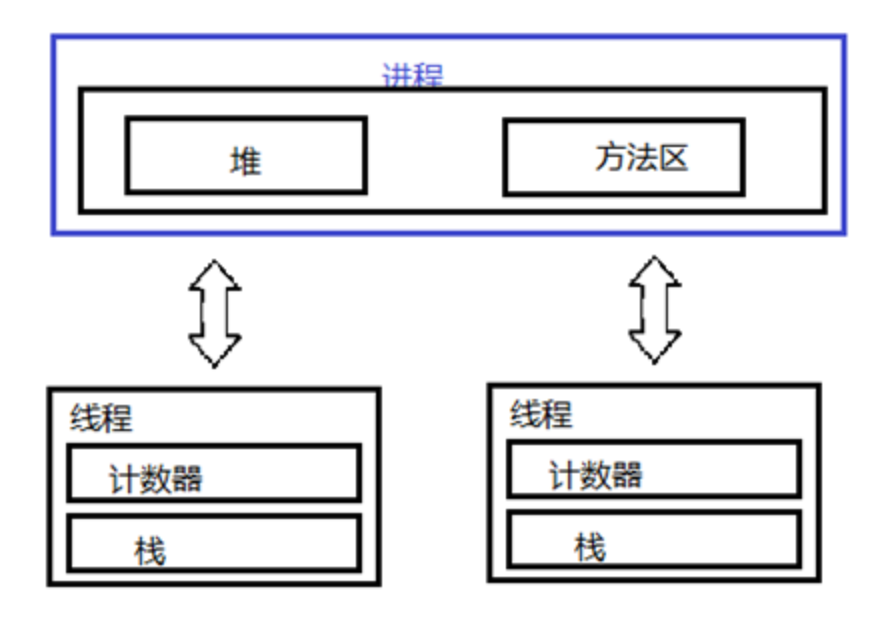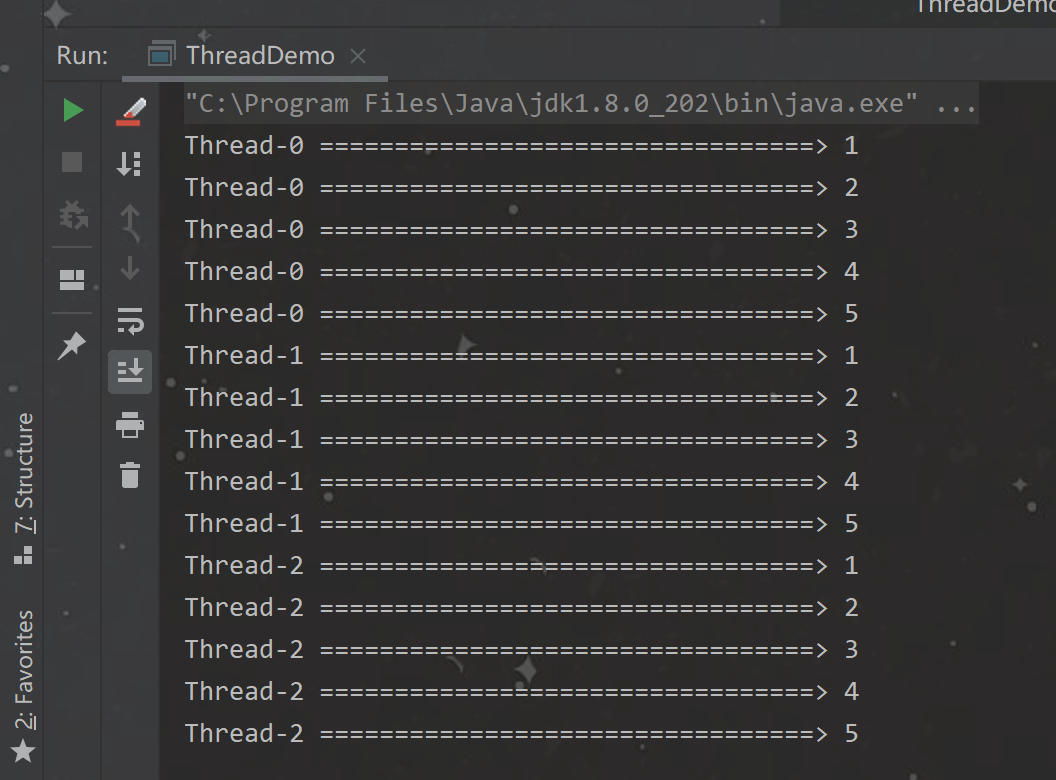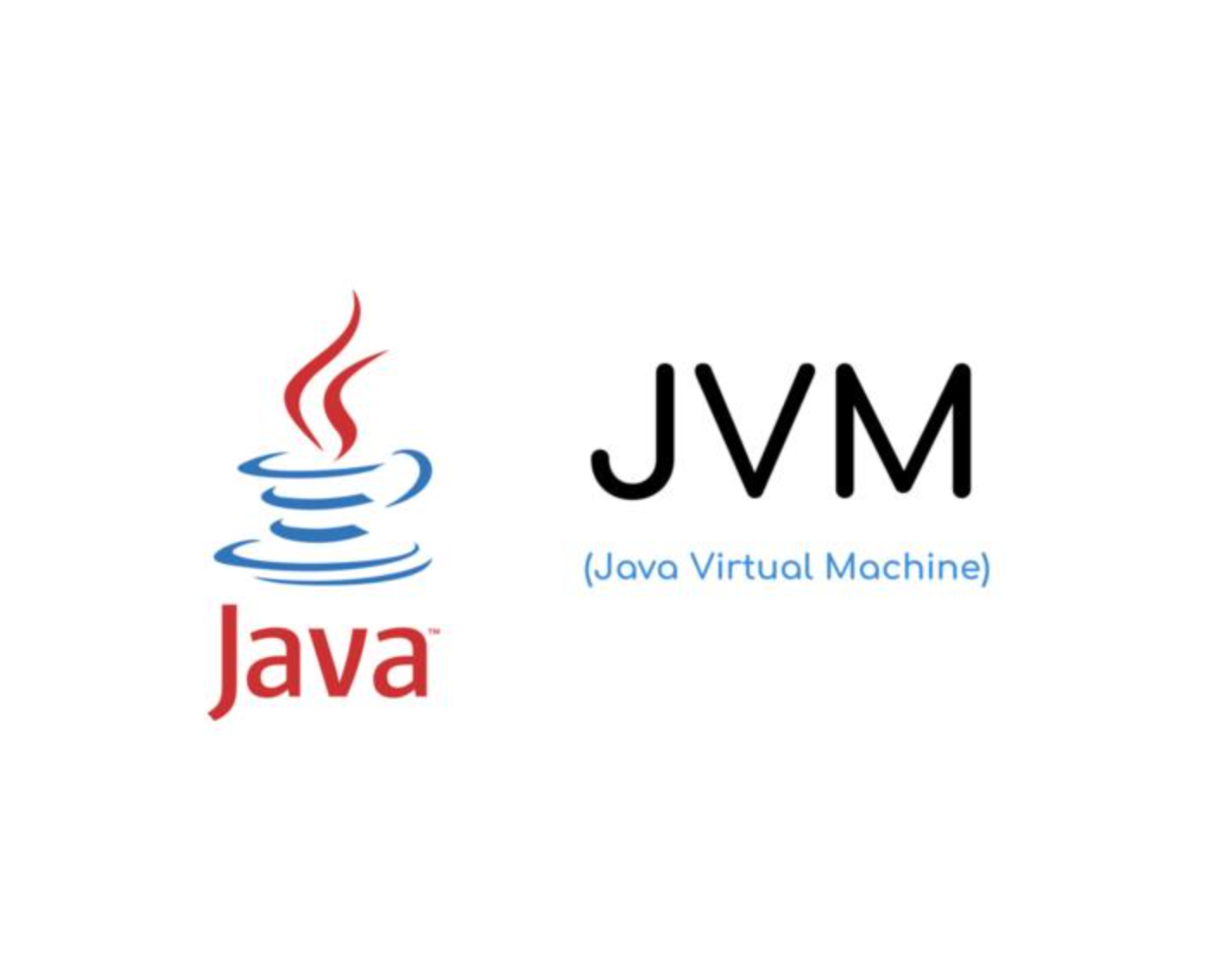JAVA 多线程编程
一、线程和进程
进程:是代码在数据集合上的一次运行活动,是系统进行资源分配和调度的基本单位。
线程:是进程的一个执行路径,一个进程中至少有一个线程,进程中的多个线程共享进程的 资源。
虽然系统是把资源分给进程,但是CPU很特殊,是被分配到线程的,所以线程是CPU分配的基本单位。

二者联系
一个进程中有多个线程,多个线程共享进程的堆和方法区资源,但是每个线程有自己的程序计数器和栈区域。
程序计数器:是一块内存区域,用来记录线程当前要执行的指令地址 。
栈:用于存储该线程的局部变量,这些局部变量是该线程私有的,除此之外还用来存放线程的调用栈祯。
堆:是一个进程中最大的一块内存,堆是被进程中的所有线程共享的。
方法区:则用来存放 NM 加载的类、常量及静态变量等信息,也是线程共享的 。
二者区别
进程:有独立的地址空间,一个进程崩溃后,在保护模式下不会对其它进程产生影响。
线程:是一个进程中的不同执行路径。线程有自己的堆栈和局部变量,但线程之间没有单独的地址空间,一个线程死掉就等于整个进程死掉。
- 简而言之,一个程序至少有一个进程,一个进程至少有一个线程。
- 线程的划分尺度小于进程,使得多线程程序的并发性高。
- 另外,进程在执行过程中拥有独立的内存单元,而多个线程共享内存,从而极大地提高了程序的运行效率。
- 每个独立的线程有一个程序运行的入口、顺序执行序列和程序的出口。但是线程不能够独立执行,必须依存在应用程序中,由应用程序提供多个线程执行控制。
- 从逻辑角度来看,多线程的意义在于一个应用程序中,有多个执行部分可以同时执行。但操作系统并没有将多个线程看做多个独立的应用,来实现进程的调度和管理以及资源分配。这就是进程和线程的重要区别
二、创建线程的四种方式
1. 继承 Thread 类
1
2
3
4
5
6
7
8
9
10
11
12
13
14
15
16
17
18
19
| public class ThreadDemo extends java.lang.Thread {
@Override
public void run() {
for (int i = 1; i <= 5; i++) {
System.out.println(Thread.currentThread().getName() + " =================================> " + i);
}
}
public static void main(String[] args) {
ThreadDemo threadDemo1 = new ThreadDemo();
ThreadDemo threadDemo2 = new ThreadDemo();
ThreadDemo threadDemo3 = new ThreadDemo();
threadDemo1.start();
threadDemo2.start();
threadDemo3.start();
}
}
|

2. 实现 runnable 接口
1
2
3
4
5
6
7
8
9
10
11
12
13
14
15
16
| public class RunnableDemo implements Runnable {
@Override
public void run() {
for (int i = 1; i <= 5; i++) {
System.out.println(Thread.currentThread().getName() + " =================================> " + i);
}
}
public static void main(String[] args) {
RunnableDemo runnableDemo = new RunnableDemo();
new Thread(runnableDemo, "a").start();
new Thread(runnableDemo, "b").start();
new Thread(runnableDemo, "c").start();
}
}
|
这里也可以直接使用 lambda 表达式
1
2
3
4
5
6
7
8
9
10
11
12
13
14
15
16
17
| public static void main(String[] args) {
new Thread(()->{
for (int i = 1; i <= 50; i++) {
System.out.println(Thread.currentThread().getName() + " ====> " + i);
}
}, "a").start();
new Thread(()->{
for (int i = 1; i <= 50; i++) {
System.out.println(Thread.currentThread().getName() + " ===========> " + i);
}
}, "b").start();
new Thread(()->{
for (int i = 1; i <= 50; i++) {
System.out.println(Thread.currentThread().getName() + " ======================> " + i);
}
}, "c").start();
}
|
3. 实现 callable 接口
1
2
3
4
5
6
7
8
9
10
11
12
13
14
15
16
17
18
19
20
| import java.util.concurrent.Callable;
import java.util.concurrent.FutureTask;
public class CallableDemo implements Callable<String> {
@Override
public String call(){
for (int i = 1; i <= 50; i++) {
System.out.println(Thread.currentThread().getName()+" "+i);
}
return "";
}
public static void main(String[] args) {
CallableDemo callableDemo = new CallableDemo();
FutureTask<String> task = new FutureTask<>(callableDemo);
new Thread(task, "a").start();
new Thread(task, "b").start();
new Thread(task, "c").start();
}
}
|
4. 线程池
1
2
3
4
5
6
7
8
9
10
11
12
13
| public class ThreadPoolDemo {
public static void main(String[] args) {
ExecutorService executorService = Executors.newCachedThreadPool();
for (int i = 0; i < 10; i++) {
executorService.execute(()->{
for (int j = 0; j < 10; j++) {
System.out.println(Thread.currentThread().getName());
}
});
}
executorService.shutdown();
}
}
|
三、线程池的创建
1. 线程池七大参数
1
2
3
4
5
6
7
8
9
10
11
12
13
14
15
16
17
18
19
20
21
22
23
24
| public ThreadPoolExecutor(int corePoolSize, // 核心线程池大小
int maximumPoolSize, // 核心线程池大小
long keepAliveTime, // 存活时间
TimeUnit unit, // 时间单位
BlockingQueue<Runnable> workQueue, // 阻塞队列
ThreadFactory threadFactory, // 线程工厂
RejectedExecutionHandler handler // 拒绝策略) {
if (corePoolSize < 0 ||
maximumPoolSize <= 0 ||
maximumPoolSize < corePoolSize ||
keepAliveTime < 0)
throw new IllegalArgumentException();
if (workQueue == null || threadFactory == null || handler == null)
throw new NullPointerException();
this.acc = System.getSecurityManager() == null ?
null :
AccessController.getContext();
this.corePoolSize = corePoolSize;
this.maximumPoolSize = maximumPoolSize;
this.workQueue = workQueue;
this.keepAliveTime = unit.toNanos(keepAliveTime);
this.threadFactory = threadFactory;
this.handler = handler;
}
|
根据阿里巴巴的Java开发手册

1
2
3
4
5
6
7
8
9
10
11
12
13
14
15
16
17
18
19
20
21
22
23
24
25
26
27
28
29
30
31
32
33
34
| 1. Executors.newSingleThreadExecutor();
public static ExecutorService newSingleThreadExecutor() {
return new FinalizableDelegatedExecutorService
(new ThreadPoolExecutor(1, 1,
0L, TimeUnit.MILLISECONDS,
new LinkedBlockingQueue<Runnable>()));
}
public LinkedBlockingQueue() {
this(Integer.MAX_VALUE);
}
2. Executors.newFixedThreadPool(3);
public static ExecutorService newFixedThreadPool(int nThreads) {
return new ThreadPoolExecutor(nThreads, nThreads,
0L, TimeUnit.MILLISECONDS,
new LinkedBlockingQueue<Runnable>());
}
public LinkedBlockingQueue() {
this(Integer.MAX_VALUE);
}
3. Executors.newCachedThreadPool();
public static ExecutorService newCachedThreadPool() {
return new ThreadPoolExecutor(0, Integer.MAX_VALUE,
60L, TimeUnit.SECONDS,
new SynchronousQueue<Runnable>());
}
|
以上三种创建方法都默认参数填入了最大值,可能会堆积大量的请求,创建大量的线程,从而导致 OOM。
我们应该指定参数进行创建
1
2
3
4
5
6
7
8
9
| ThreadPoolExecutor threadPoolExecutor = new ThreadPoolExecutor(
3,
5,
1,
TimeUnit.MINUTES,
new LinkedBlockingDeque<>(3),
Executors.defaultThreadFactory(),
new ThreadPoolExecutor.AbortPolicy()
);
|
2. 四种拒绝策略
1
2
3
4
5
6
7
8
9
10
11
| ThreadPoolExecutor.AbortPolicy();
ThreadPoolExecutor.CallerRunsPolicy();
ThreadPoolExecutor.DiscardOldestPolicy();
ThreadPoolExecutor.DiscardPolicy();
|















